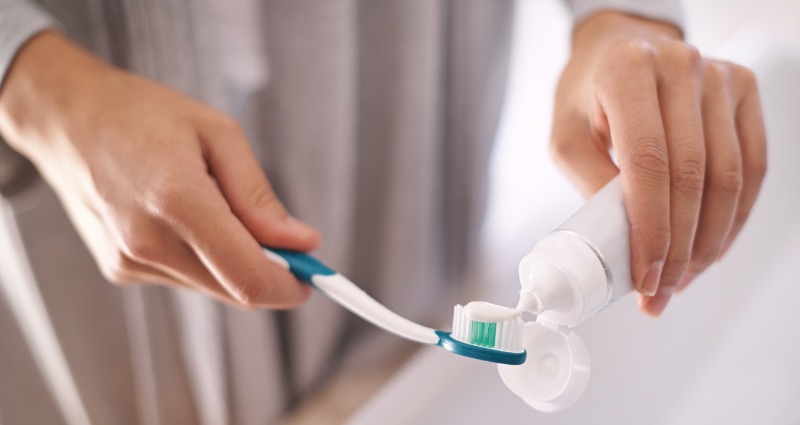Few minerals are as controversial as fluoride. For decades, people worldwide have questioned whether we should be using it as a necessary ingredient in toothpaste. So, should we be using fluoridated toothpaste, or should we opt for non-fluoridated products?
What is Fluoride?
Fluoride is a naturally occurring mineral found in freshwater and seawater. The mineral is also found in our bones and teeth. In the 1940s, scientists realized the link between high levels of naturally occurring fluoride in some communities’ water supplies and low levels of tooth decay. Fluoride was added to drinking water for the first time in 1945 in Michigan, while in Australia fluoride was added to the water supply in the 1960s.
Today, around 89% of the Australian population has fluoridated drinking water in their homes. The presence of fluoride in our water and toothpaste, as well as our improved diet and oral hygiene has seen a significant decrease in dental decay. The Australian National Health and Medical Research Council has found water fluoridation reduces tooth decay by 26-44% in children and adolescents and by 27% in adults. Drinking fluoridated water from an early age has been found to reduce the rate of tooth decay in adults.
What Are the Benefits of Using Fluoridated Toothpaste?
Fluoride in toothpaste helps enamel harden so it can better resist acid produced by oral bacteria. When teeth are forming in babies and children, fluoride can become incorporated in the enamel as the teeth form. Once the teeth erupt, they are more resistant to cavities. Fluoride attracts other minerals such as calcium to build strong teeth and bones.
Fluoride is effective when applied topically to teeth via drinking fluoridated water, fluoride treatment at the dentist and through toothpaste. Fluoridated toothpaste was first made available in 1956. The American Dental Association requires a toothpaste to contain fluoride to earn the ADA Seal of Acceptance.
Risks of Fluoride
Too much fluoride can cause fluorosis, which is discolouring and mottling of the teeth. Children under the age of three are recommended to use a non-fluoridated toothpaste as they haven’t yet mastered the art of not swallowing toothpaste. After the age of three, adult supervision is recommended when children start brushing with a fluoridated toothpaste to ensure they don’t swallow too much.
Fluoride toxicity is a rare illness caused by ingesting large quantities of fluoride, especially in children under the age of six years. The toxicity can cause pain, vomiting, diarrhea, kidney and heart problems.
Types of Non-Fluoridated Toothpaste
Some people would prefer to use a toothpaste that doesn’t contain fluoride. The main reasons for avoiding fluoride are medical conditions and personal beliefs that fluoride may be harmful.
There are alternatives to fluoride toothpaste that can help prevent dental decay.
Charcoal
Charcoal toothpastes have grown in popularity amongst people wanting to minimize their exposure to fluoride. Activated charcoal is made from oxidised substances like wood, coconut shells and bamboo. Charcoal is used for naturally whitening teeth as its abrasive nature helps remove surface staining caused by tea, coffee and red wine. However, charcoal does have its downsides. It can cause staining around dental work including crowns, veneers, fillings and the gum lines. There’s also no evidence that charcoal toothpaste works and could be doing damage to the enamel. It’s not recommended to be used twice a day in place of regular toothpaste due to its abrasive nature.
Xylitol
Xylitol is extracted from the fibrous parts of plants and known as sugar alcohol. It works by starving bacteria and neutralizing the pH level, whereas sugar combines with plaque and lowers the pH level to create an acidic state. Repeated use of xylitol causes the quality and quantity of oral bacteria to change, meaning fewer decay-causing bacteria are able to survive on teeth. Less plaque accumulates causing less acidity and a more neutral pH.
Arginine
Arginine is an amino acid found in saliva. Arginine is metabolized by oral bacteria that raise the pH. When combined with calcium, arginine can stop plaque from forming.
Baking Soda
The fine white sodium bicarbonate powder has antibacterial properties to help protect teeth from decay. It’s also effective at removing stains from teeth and appears in the ingredient list of some commercial toothpastes.
Some people don’t like the taste and texture of making a baking soda and water paste, but adding peppermint oil can improve the taste.
The Wash-Up of Fluoridated vs Non-Fluoridated Toothpaste
There is no shortage of alternatives to commercial toothpaste that may work to clean away food particles and reduce the level of bacteria. The non-fluoridated alternatives don’t have the protective qualities of a commercial toothpaste that contains fluoride.
Fluoridated toothpaste aids the remineralization process by creating an acid-resistant coating on the tooth’s surface. The Australian Dental Association recommends brushing with a pea sized amount of fluoridated toothpaste to create a protective acid-resistant coating on the surface of your teeth.
Whichever toothpaste you use, remember to keep up with your brushing routine and pay close attention to your oral hygiene for the benefit of your teeth and breath. If you’d like to discuss any concerns related to oral hygiene, make a call to your nearest orthodontist: https://caortho.org/locations?zip=92374&d=5
Source: https://www.theorthodontists.com.au/blog/should-you-use-fluoridated-or-non-fluoridated-toothpaste

